

 The South African
The South African
Clisdal was one of the first ten military airmen to be trained to fly in South Africa in 1913. A man of many military skills, he was at different times a cavalryman, Maxim gunner, field gunner, air observer, pilot, and finally second-in-command of the heavy fortress guns at Table Bay.

His Medals:
M.C.(GV) unnamed,
QSA CC/ SA1902 38407 Pte. Imp. Yeo.,
Natal clasp 1906
Pte. Cape Mtd. Riflemen,
1914-15 Star Sjt. S.A.M.R.-F.A.B.,
BWM & unilingual Victory Medal, (MID),
Capt. R.A.F.,
R.A.F. wings as a
sweetheart pin brooch in 9ct gold. (7)
Before flying with the Royal Flying Corps he served with the short lived S.A. Aviation Corps in 1915. The S.A. Air Force was established on 1.2.1920 and claims to be the second oldest Air Force in the world without a change of name. The Royal Air Force is the oldest, founded in 1918. The Wright brothers are famous for their first successful powered flight in a heavier than air machine at Kitty Hawk in the U.S.A. on 17.12.1903. In South Africa our Pioneer Airmen were trained to fly, but ten years later. Clisdal must have been proud to have flown with the S.A.A.C., the forefather unit to the South African Air Force, the second oldest Air Force in the world.
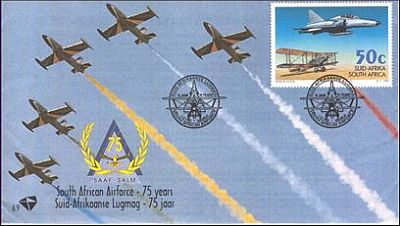
Special postal cover:
S.A. Air Force 1920-1995.
Second oldest in the Commonwealth.
Clisdal was born in Bangor, Ireland in 1883. He enlisted in the 115 strong, 134th (Irish Horse) Company, one of four companies of the 29th Battalion (Irish Horse) Imperial Yeomanry, arriving in South Africa in 1902. 35 000 of the Imperial Yeomanry served in South Africa, suffering 3 771 casualties. After the Boer War Clisdal decided to remain in the Cape Colony, and he proudly served in the Armed Forces of that Colony and later the Union Defence Force for 31 years, retiring at the age of 50 in 1933. He died at Johannesburg in 1938.
He next served with the Cape Mounted Riflemen from 1902, and later with its successor unit the 1st S.A. Mounted Rifles until 1915. During the Bambata Rebellion in Natal in 1906 the government of the Cape Colony offered military assistance to the Colony of Natal. A small detachment of the C.M.R. was sent consisting of a Captain, and 20 gunners, 13 native with mules and six Maxim guns, together with 35 fully equipped signallers and a Lieutenant.
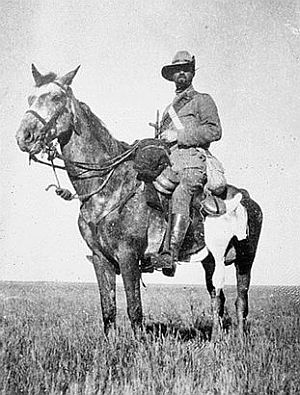
Clisdal as a mounted Rifleman
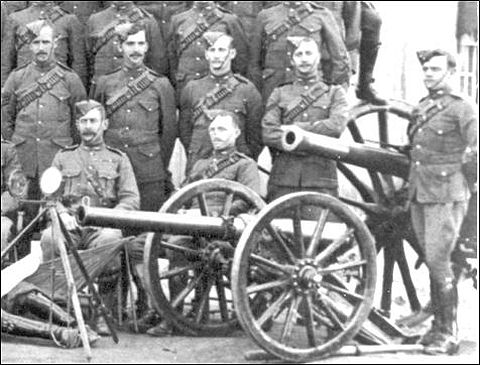
1912 Clisdal was serving in the
Artillery troop of the Cape Mounted
Rifles and appears as the man
standing in the centre of this group.
On 10.5.1913 in a Union Government Gazette notice provision was made for the establishment of the South African Aviation Corps, and applications were invited for the ten trainee pilot positions envisaged. Hundreds of applications were received and ten men were selected for flying training by the Compton Paterson Syndicate Ltd at Alexanders- fontein outside of Kimberley between August and December 1913, to qualify for the Federation Aeronautique Internationale Certificate. They appear in the next photograph, and are named in a letter from the Secretary for Defence dated 28.7.1913.
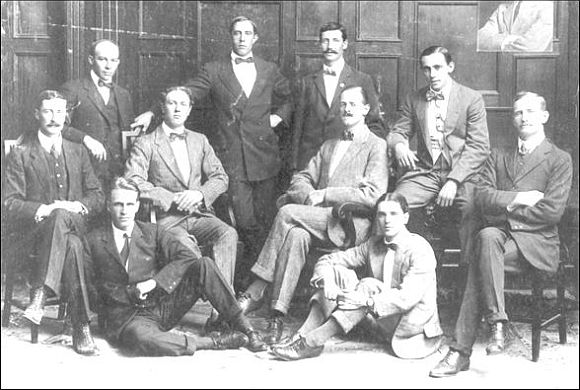
The ten South African pioneer airmen.
John Clisdal is seated on the right
A Paterson biplane was used in the training of the ten military pupils, which had a maximum speed of 50 miles per hour. A replica aircraft was built by the S.A. Air Force in 1983 and is now housed in a replica hanger erected on the site of the first flying school near Kimberley.
Early in 1914 six of the ten pioneers were sent to England for further training and were commissioned into the Royal Flying Corps upon the outbreak of World War I. Clisdal was not one of these, and he returned to his position with the S.A. Mounted Rifles, where he was to serve as a field gunner with the 2nd Permanent Battery of four guns during early part of the campaign in German South West Africa from September 1914 to February 1915.
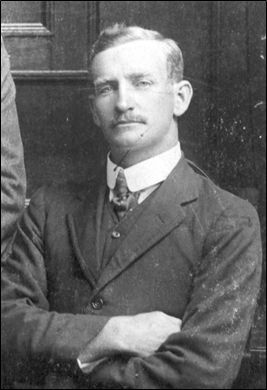
John Clisdal
South African Aviation Corps
The S.A.A.C. was formed on 29.1.1915 for service in German South West Africa. It was equipped with four Henri Farman and two B.E.2C aircraft, and had a total strength of 17 officers and 150 other ranks. Clisdal transferred to the newly formed South African Aviation Corps as an Observer officer and was gazetted Lieutenant on 23.3.1915.
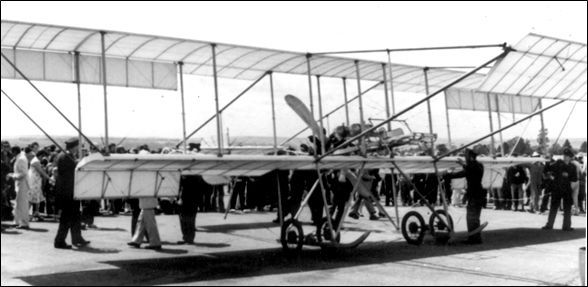
The original Paterson biplane of 1913.
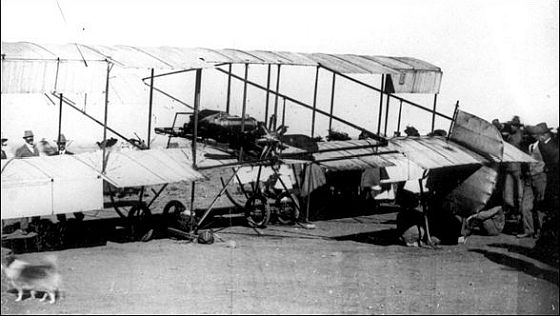
The replica built in 1983
The first operational flight was undertaken by the squadron from Karibib in April 1915. By the time the Germans surrendered on 9/7/1915, the squadron had flown over 10 000 miles on reconnaissance and bombing missions.
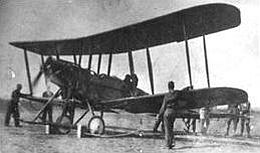
The first S.A.A.C. aircraft, a B.E.2C, to fly
on active service at Walvis Bay early in
1915.
The pilot was Lieutenant Gordon Creed.
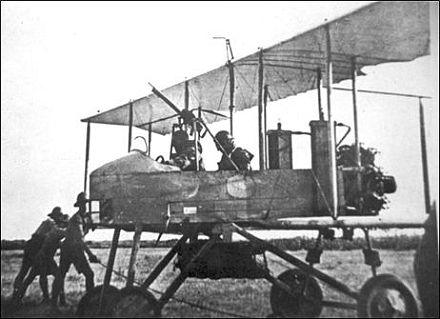
One of the four Henri Farman aircraft used by the S.A.A.C.
Note the bomb underneath
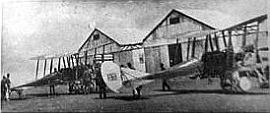
Half of the Aviation Corps aircraft strength -
two B.E.2C’s powered by 70HP, V6 Renault engines -
photographed at Walvis Bay early in 1915
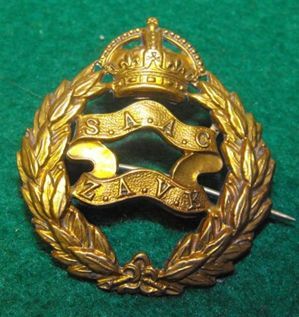
The badge of the SAAC
Royal Flying Corps Service
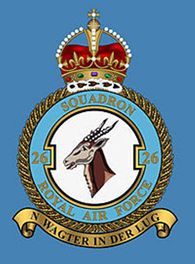
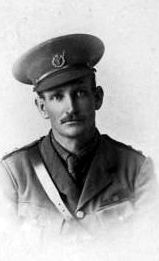
Together with many other S.A.A.C. officers and men, Clisdal then sailed for England from Cape Town in the S.S. Briton on 31.7.1915, to join 26 (South Africa) Squadron of the Royal Flying Corps upon its formation at Farnborough on 7.10.1915. He underwent further flying training at Netheravon and Farnborough, and his Royal Aeronautical Society Certificate No 1786 is dated 24.9.1915. Appointed Temporary Lieutenant with the Royal Flying Corps LG 10.9.1915. He then appears in LG 1.1.1916 as T/Lieutenant, General Duties, Flying Officers effective 6.12.1915. The squadron left England in December 1915 destined for East Africa. The ultimate establishment was increased to 352. There were three flights of four aircraft each. These were Henri Farman F27, B.E.2c and B.E.2e types. The four main functions of an army co-operation squadron, like this one, were artillery observation, contact patrols, photographic reconnaissance and bombing. At times the three flights of the squadron operated independently of one another. Over the next two years the squadron established and operated from 32 different airfields in East Africa.
Clisdal was promoted Temporary Captain effective 22.11.1916 per LG 9.12.1916, and commander of B Flight. He commanded the squadron for a short period during the illness of Major Wallace from March to June 1917. Awarded the Military Cross in LG 4.6.1917, a scarce award to the R.F.C. The squadron left Dar-es-Salaam in February 1918 for England via Durban and Cape Town. It was disbanded at Blandford Camp in July 1918. Clisdal then served as an Instructor at Salisbury Plain, and finally as a Repatriation Officer. Transferred to unemployed list effective 9.8.1919 per LG 14.10.1919 and returned to South Africa.
South African Permanent Garrison Artillery
The South African Permanent Garrison Artillery was formed in 1921, and had a total strength of 250 from personnel recruited from the S.A. Mounted Rifles. Clisdal transferred with the rank of Lieutenant from the S.A. Field Artillery where he had been serving since 1919.
He served with the S.A.P.G.A. until his retirement at the age of 50 in 1933. At this stage he was a Major and second in command of the fortress guns of Table Bay Fire Control. There were four batteries in operation at that time, Lion Battery on Signal Hill with two 9.2 inch guns, Wynyard Battery at Fort Wynyard with two 6 inch guns, King George V Battery at Milnerton with two 4.7 inch guns, and Castle Battery at the Cape Town Castle with four 12 pounder guns.
In 1925 Clisdal was the Royal Guard Commander during an inspection of troops by the Prince of Wales (later King Edward VIII) during his visit to Cape Town.
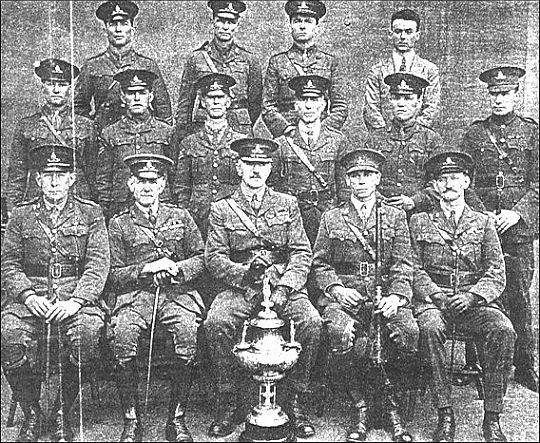
S.A. Permanent Garrison Artillery, Cape Town, with Clisdal seated right.
Clisdal was said to have been a fine horseman and participated in polo, rugby, cricket, tennis and hockey.

One of the 9.2 inch guns of the Lion Battery
on Signal Hill, Cape Town

The Rocket Life Saving Battery of the S.A.P.G.A.,
with Clisdal seated at the centre.
His name is mentioned in the following books:
The Armed Forces of South Africa, by G Tylden
Boot and Saddle, History of the C.M.R., by Young
The Nongqai, magazine of the S.A. Permanent Force
Per aspera ad astra 1920-1970, S.A.A.F. Golden Jubilee
Pioneers of Early Aviation in South Africa, by H Oberholzer
Historic Record of the S.A. Flying Corps in German South West Africa 1915, by Roberts
The S.A. Field Artillery in German East Africa and Palestine 1916-1918, by Adler & Lorch
Decorations awarded to Natal, Cape Colony and Union Defence Force Units 1877-1961, by D R Forsyth
Documents:
Death Notice
LG 4.6.1917 recording the award of the M.C.
Soldier’s papers from Defence Headquarters at Pretoria
Article on the S.A.P.G.A. appearing in the magazine “Commando”
Correspondence with General van der Spuy, one of the Pioneer Airmen
Letter 30.11.1913 from Paterson to D.H.Q. Pretoria re Clisdal’s training
Numerous documents from the files of Major Wallace, O.C. No 26 Squadron
Photograph of Clisdal with the Prince of Wales inspecting troops at Cape Town
Correspondence with the R.A.F. Museum, Hendon, the McGregor Museum, Kimberley, and the S.A. Naval Museum, Simon’s Town.
This article was previously published in Medal News in June 2004, but is reproduced here for the interest of South African military enthusiasts.
About the Author
Brian Thomas is a retired chartered accountant. He attended the second lecture of the S.A.M.H.S., given by Lt-Col B. Simpkins M.M., whilst on business in Johannesburg in 1967. He relocated to Johannesburg within 6 months and was the honorary auditor of the Society for the following four years before moving to Durban.
He has been a medal collector of note for over 50 years and built up a major collection which he has now sold. Apart from family groups he retained only the group to Garnet Green M.C. and bar. Green’s story was published in Military History Journal Vol 19 no 3, Dec 2021.
He now spends time writing the stories of the recipients of his former medal groups for the SAMHS, the Orders and Medals Society of Britain and the magazine Medal News.
His wife of over 60 years, Barbara, is very supportive of his hobby.
Return to Journal Index OR Society's Home page
South African Military History Society / scribe@samilitaryhistory.org